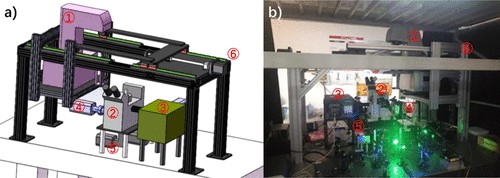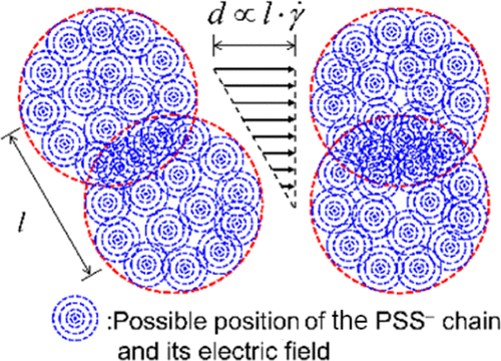Shear-Induced Counterion Release of a Polyelectrolyte
Kaikai Zheng, Kuo Chen, Weibin Ren, Jingfa Yang, and Jiang Zhao*
Macromolecules 2022, 55, 1647−1656
For the purpose of understanding the molecular origins of the rheological properties of polyelectrolyte solutions, an in situ investigation into the distribution of counterions of a polyelectrolyte under shear is conducted. An apparatus named rheo-microspectrometer is constructed by integrating an advanced rheometer with multiple highly sensitive single-molecule fluorescence microscopic and spectroscopic techniques, including fluorescence correlation spectroscopy, photon counting histogram, single-molecule fluorescence imaging, and fluorescence emission spectroscopy. It has the capacity of measuring the directional and diffusive motions of single fluorescence-labeled polymer molecules as well as their fluorescence emission spectra when the samples are under shear. The shear-induced changes in counterion distribution of a model polyelectrolyte, sodium polystyrene sulfonate (NaPSS), is investigated at the single molecular level. Fluorescence resonance energy transfer between the fluorescence donor attached at the PSS− chain end and the cationic acceptor serving as the counterion probe in solution shows the increase of average counterion−chain distance. The emission spectra of the pH-responsive fluorophore labeled at the PSS− chain end show the dilution of hydronium ions near the chain by shear. The results indicate that the shear applied to the NaPSS solution releases the counterions from the PSS− chain. The mechanism of counterions’ redistribution is attributed to the shear-induced transient overlap of electric fields of multiple PSS− chains. The results indicate that the effective charge of a polyelectrolyte molecule increases with shear, in contrast to the conventional assumption of the invariable charges.


https://pubs.acs.org/doi/10.1021/acs.macromol.1c02275?ref=pdf
